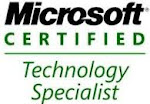Back to the day that I have started learning SharePoint, It
was Thursday in January month and SharePoint 2010 came out recently at that time. Few of my colleagues
are started working on SharePoint 2010 and few more working on SharePoint 2007.
MOSS 2007 was launched with greater things. There were lot of changes between SharePoint 2003 and SharePoint 2007. We have to check that we
are going to inherit from System.Web.UI.Webcontrols.Webpart or SP WebPart
class. Here are few differences between
ASP.NET web part and SharePoint webparts.
- We don’t have cross page connections
- Data caching allows caching in content DB
- Client side connection and connections between two webparts.
In SharePoint 2007, we need to use CKS tools to create WSP
package or else we need to create our own package. Here are the simple steps,
- Create a dwp file for the web part
- Create feature.xml file and manifest.xml file
- Create a DDF to cab and use it to create a cabinet file using makecab command.
For Moss 2007, project server and and info path form services
also released.
SharePoint 2010 was come out as the next release to the
SharePoint 2007 with few add-ins (Office web apps, FAST search server.) Web parts can be created also using silverlight packages and we can use them in
SharePoint for more beautiful UI. We can use Silverlight in SP 2007, but we have
to write our own code to it by using web services or using Object model. REST
came in to the picture with Client side Object model and Silverlight Object
model in SharePoint 2010. This helped to get the SharePoint object and use them
on client machine. Sand boxed solutions
are helped to deploy the solutions at site collection level instead of farm.
All these are created that In previous versions all code was running under
server side, so to escape the burden from the server. So that the impact on web
front end machine performance was impacted.
In SharePoint 2013, we can see that CSOM has expanded with
extra functionality and APPS was working more of replacement of Sand boxed solutions. Here we have more feasibility to use client side things like
JavaScript, JQuery, Silverlight, and HTML.
These are few basics on the SharePoint evolution and it is
helpful to know the things as a SharePoint developer.


